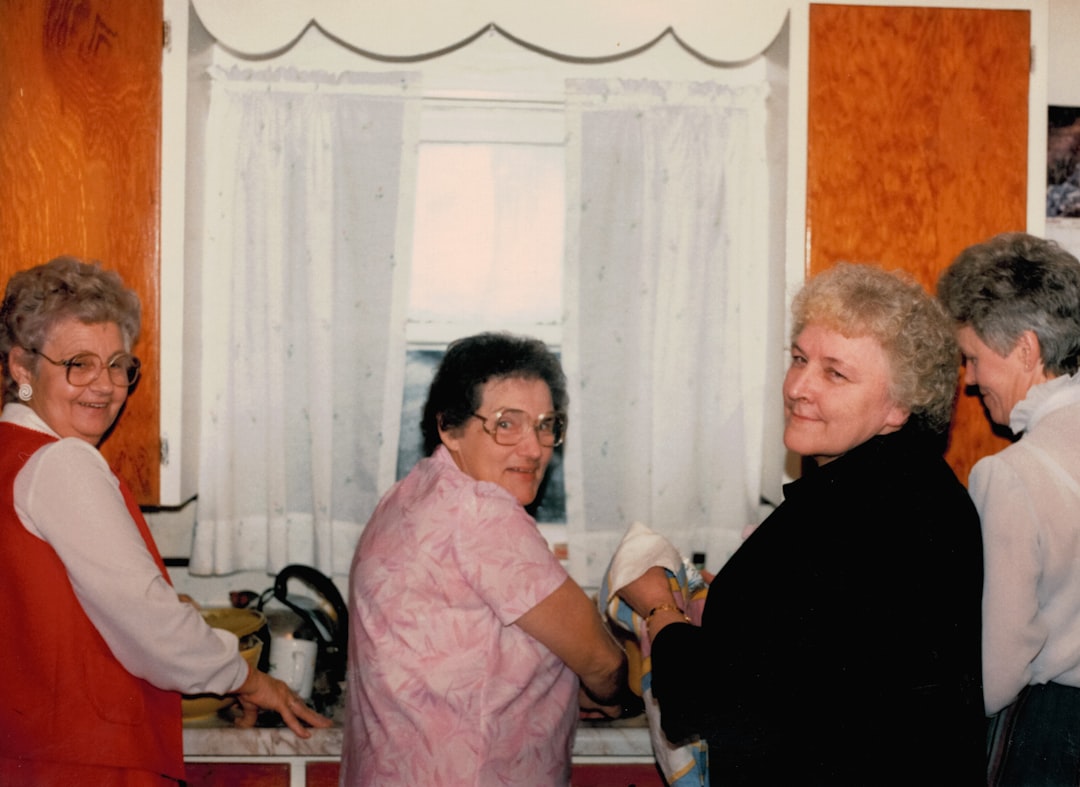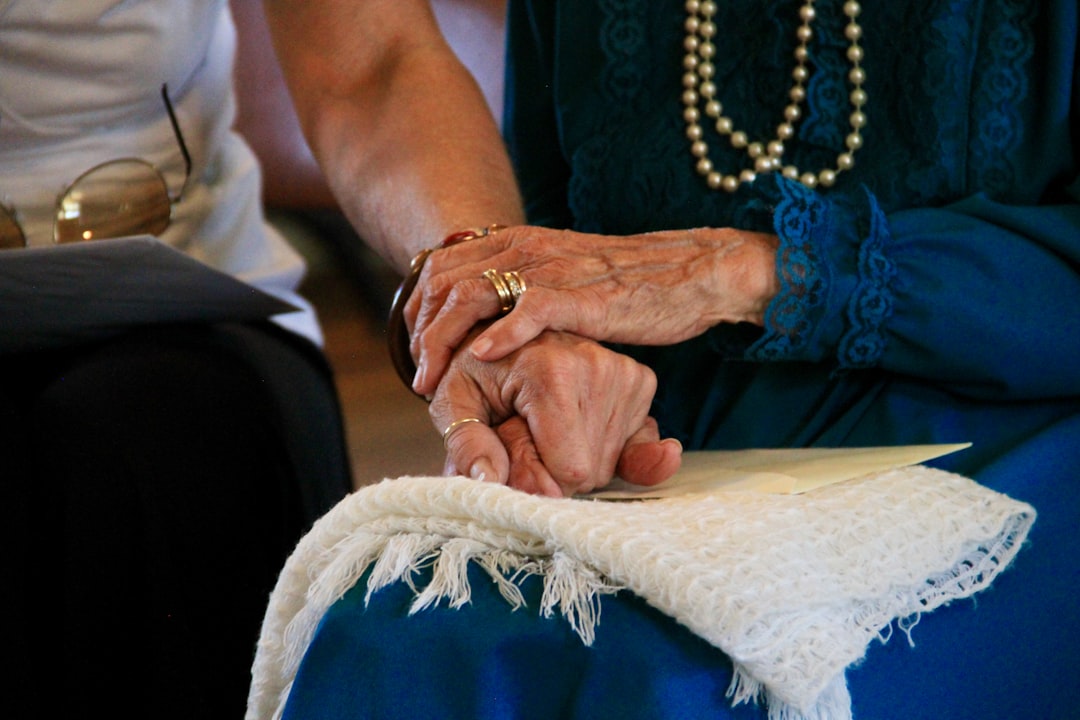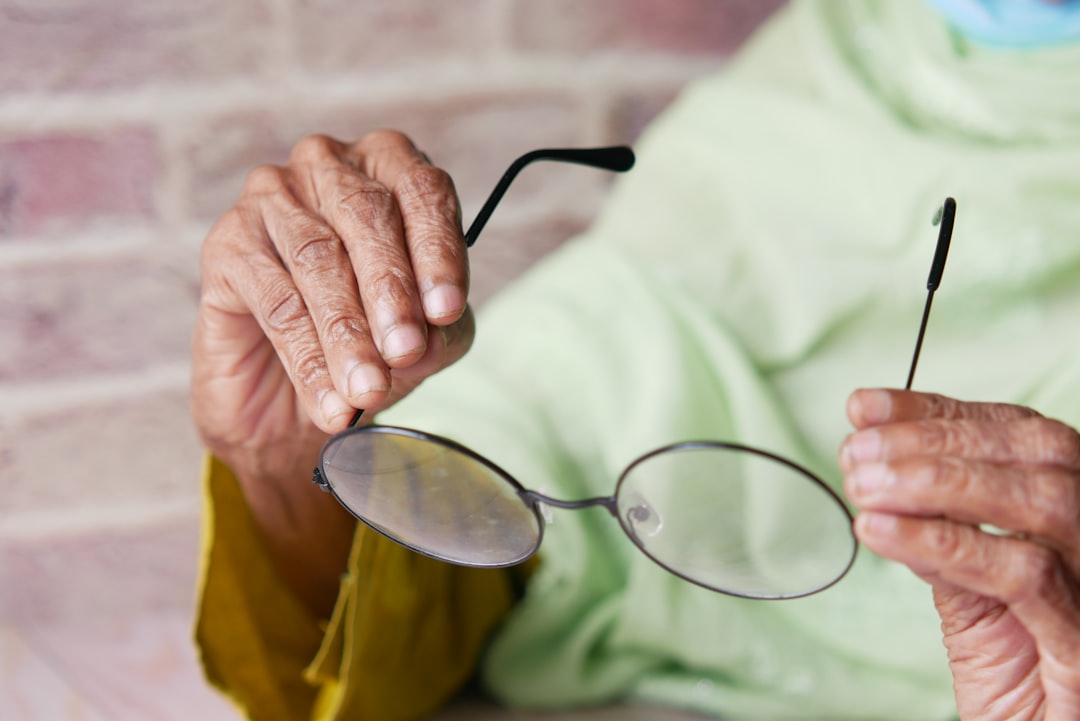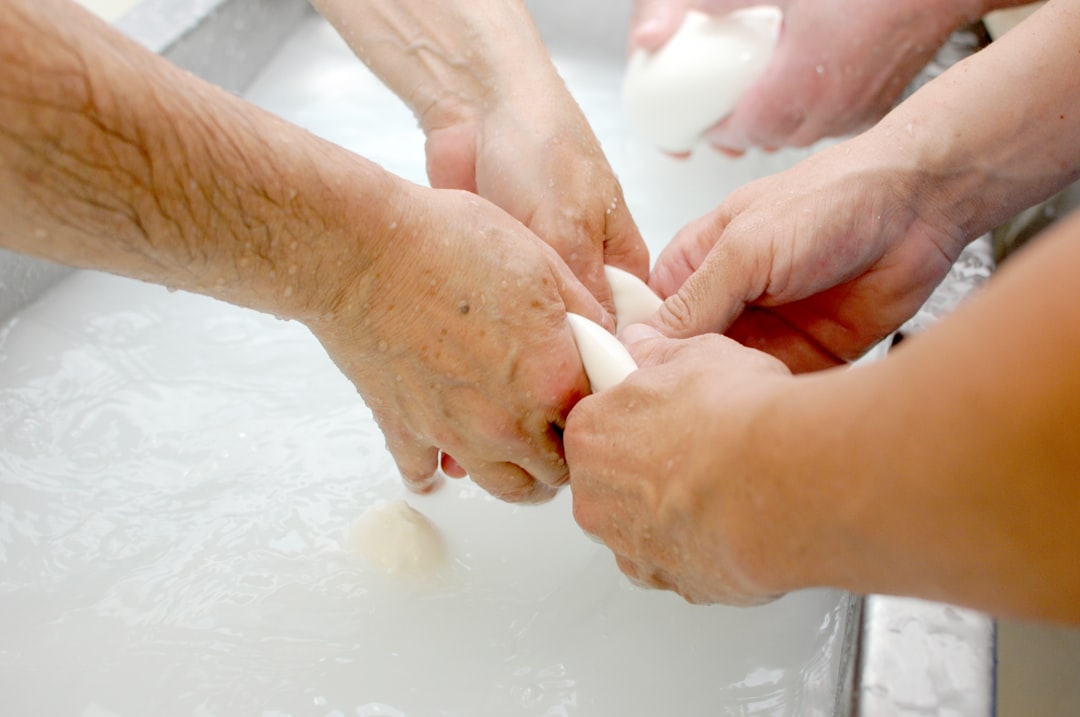

Engage prospects with a scan and streamline customer engagement with FREE QR code marketing tools by Sona – no strings attached!
Create a Free QR CodeFree consultation

No commitment

Engage prospects with a scan and streamline customer engagement with FREE QR code marketing tools by Sona – no strings attached!
Create a Free QR CodeFree consultation

No commitment
In senior home care services, the stakes are uniquely high. Families make decisions under pressure, residents value clarity and compassion, and care teams juggle complex schedules with deeply personal needs. Yet too often, the most helpful insights remain unspoken or untracked. Paper comment cards go missing, phone surveys arrive at inconvenient times, and valuable remarks offered in hallways or during transitions never make it into a system where they can drive change. The result is an incomplete picture of satisfaction and needs, making it harder to improve services, elevate reviews, increase occupancy, and maintain compliance.
QR codes provide a fast, accessible bridge between in-person experiences and digital feedback. Scanning takes seconds, with no app required. Codes can be placed at the exact moment and location where a family member, client, or referral partner is most willing to share a thought or request help. With the right real-time analytics, these scans become data that leaders can act on immediately. By placing trackable QR codes on brochures, appointment cards, bedside materials, discharge packets, and signage, providers can turn everyday interactions into actionable insights. Adoption is rising in senior living.
When integrated into a structured process, QR-enabled feedback transforms operations: it closes loops, reduces response times, and ensures every voice has a pathway to be heard. What follows is a practical roadmap for using QR codes to gather high-quality feedback, uncover growth opportunities, and build a more connected, data-driven senior care experience.

Many senior care organizations struggle to capture the feedback of high-value clients who express interest or use services but never fill out a form or answer a callback. This leads to patchy understanding of satisfaction, missed opportunities for retention, and slower improvement cycles. QR codes turn each physical touchpoint into a simple digital channel. A quick scan sends families to a survey, a contact form, or a resource, and every action is trackable.
To succeed, treat QR feedback as part of a unified experience rather than a novelty. Define what matters most, make scanning effortless for older adults and caregivers, and connect every scan to a follow-up workflow. QR codes can be printed on brochures, appointment reminders, and care folders, or displayed on counters and bedside stands. With a clear call to action, families can give feedback in the moment, and your team can see trends early enough to intervene.
Here is how to make it work in practice:
Modern QR and analytics platforms bring analog processes into a responsive, measurable pipeline. By reducing lag time between feedback and outreach, you create a cycle of continuous learning that benefits families and your team.
Automated assignment of QR codes to distinct campaigns, integrated reporting, and CRM syncing make it possible to attribute feedback to retention or lost opportunities. With this clarity, you can diagnose blind spots and track emerging trends before they become major challenges, supported by Sona’s offline attribution guidance.

Connecting in-person care moments to useful data is one of the most persistent obstacles in senior care. Families and prospects interact with your brand across brochures, tours, home visits, hospitals, and community events. Many of these interactions do not produce measurable signals. Without an easy path to share feedback or request help, organizations are left with anonymous traffic and incomplete stories about what drives satisfaction or churn.
QR codes simplify that connection. A single scan can open a survey, a resource hub, or a callback request, and every scan is a datapoint. You can see what was scanned, where it happened, and whether it led to a conversation. This clarity guides better staffing, training, messaging, and quality initiatives.
QR codes are valuable because they address five common gaps:
Where manual methods once caused delays and missed insights, QR-driven workflows capture timely feedback exactly when and where families are most willing to share it. This supports quality improvement, marketing optimization, and better family experiences.
Senior home care audiences include adult children, current clients, residents, referral partners, and healthcare professionals. Each group benefits from a slightly different destination. Selecting the right QR format ensures that every scan leads to the most helpful action for that moment.
Dynamic QR codes are often best for senior care. They allow quick updates to destinations and provide detailed analytics about scan behavior. Static codes work for evergreen resources such as a general information page or a vCard for a staff member whose contact details rarely change.
Common formats that work well in this vertical include:
Organizations facing issues with outdated destinations or unclear tracking should prioritize dynamic codes. This approach keeps materials current and builds a data layer that reveals which placements support response rates and where engagement falls short.

Many providers invest heavily in websites and digital ads while underestimating the engagement taking place in clinics, homes, and community events. Flyers, brochures, calendars, and appointment cards are often the most persistent touches a family receives, yet they rarely capture measurable data. QR codes convert those touchpoints into visible signals. For ideas, see senior care marketing.
By deploying QR codes where families already interact with your brand, you can illuminate the hidden parts of the journey. Each scan tells you something about timing, interest, and intent, which improves follow-up and reduces missed opportunities.
Consider placing QR codes in these locations and materials:
Strategic placement at decision points across the care journey enables smarter allocation of resources. You will know which campaigns deserve expansion and which placements require creative refinements to lift engagement.

Use cases should mirror everyday interactions. When you choose destinations that match a person’s moment of need, scan rates rise and feedback becomes more complete. In senior home care, three categories deliver fast impact.
Each use case produces measurable results when paired with analytics. For example, feedback QR codes can show scan-to-completion rates by placement, while informational codes reveal which programs draw the most interest. Promotional codes can directly attribute inquiries and bookings to specific assets and messages.
Every QR scan is a high-intent signal. It shows that a person took the time to engage with your content in a specific context. By deploying distinct codes across brochures, bedside materials, and event assets, you can segment audiences based on stage, interest, and urgency. This lets you personalize follow-up and improve conversion.
In senior home care, audience distinctions matter. Adult children may be in research mode, residents may be seeking activity information, referral partners may be evaluating care capacity, and hospital discharge planners may be confirming availability for rapid starts. Tagging scans appropriately allows you to nurture each group with relevant content.
Key tactics for building retargeting audiences include:
Retargeting with QR data moves your outreach beyond assumptions. You will prioritize contacts showing real readiness rather than spending time on anonymous impressions that rarely convert.
Disconnected campaigns lead to confusion and wasted spend. Senior care prospects receive brochures from hospitals, attend community talks, visit your website, and speak with family advisors. If each touchpoint uses different messages and none are trackable, opportunities slip through. QR codes connect offline and online journeys so that every interaction can be measured, attributed, and improved.
Treat each QR as a gateway to a consistent experience. Align language on print, signage, and digital destinations so families always know what to expect. Maintain short, mobile-friendly forms with progress indicators and clear benefit statements. Then, route scan data into your CRM and marketing tools to power closed-loop reporting.
Examples of how QR codes enhance multichannel strategy:
A connected QR strategy yields a complete view of engagement across print and in-person channels. With this foundation, marketing leaders can optimize spend and content by audience segment and journey stage.
A well-run QR program requires planning, consistent creative, and feedback loops. Begin with a clear use case, deploy in high-impact placements, and measure rigorously. The following steps provide a repeatable framework you can adapt to any location or campaign.
Remember that scanning is a behavior shaped by context. Make each QR a clear promise: what will a family get for scanning, how long will it take, and why does it matter to their loved one’s care. Then use the data that follows to refine creative, placements, and messaging.
With a disciplined checklist and consistent reporting, you will turn QR experiments into a scalable program that reliably gathers feedback and fuels growth.
Senior home care teams need to prove impact. Leaders want to know which printed assets generate tours, which placements reduce negative reviews, and how quickly frontline teams respond after a concern is raised. Without tracking, you are guessing. With QR analytics, you can tie physical engagement to business outcomes.
Sophisticated platforms let you see every step from scan to outcome. You can attribute scans by date, location, asset type, and device, and then connect those scans to form fills, calls, bookings, and revenue. This turns feedback into a performance signal and gives you the confidence to invest where it matters most.
Modern platforms enable:
When you link QR data to outcomes, you build a feedback engine that supports continuous improvement. This capability is essential in a competitive sector where timely intervention and consistent quality determine reputation and occupancy.
As you scale QR adoption, you will encounter practical challenges. Some families may be unfamiliar with scanning. Certain placements may see glare or low traffic. Staff may forget to mention the QR option during busy shifts. Addressing these realities early makes a significant difference in results.
The most successful programs treat QR as both a technology and a habit. They focus on consistent prompts, clear value, and reliable reporting. Equip frontline staff with talking points, give families a reason to scan, and make the destination worth their time.
Practical ways to accelerate success:
By embedding QR codes into the rhythms of care and communication, you will see scan rates rise and feedback quality improve. Over time, this creates a culture of listening and action.

Real-world deployments show that even small changes in placement or messaging can yield measurable gains. Providers that make QR scanning easy in the flow of care consistently outperform those that bury codes in cluttered posters or long forms.
Consider these examples for inspiration:
Use these ideas as starting points. Test different CTAs such as Scan to Share Today’s Experience or Scan for a 60-Second Check-In, and compare results by placement and audience.
Successful implementation depends on accessibility, clarity, and discipline. Families should immediately understand why to scan, what they will receive, and how long it will take. Staff should know when to invite scanning and how to handle alerts.
Common pitfalls tend to cluster around design, placement, and follow-through. Avoid tiny codes with weak contrast, busy layouts that hide the QR, and destinations that demand too many fields. Be thoughtful about privacy and consent, especially when handling sensitive feedback.
Practical guidance to stay on track:
QR codes are reshaping senior home care by turning every print and in-person touch into a digital moment that is measurable and actionable. With strong execution, they help close long-standing gaps such as anonymous visitors, inconsistent follow-up, and underreported issues. Over time, this approach supports exceptional care, stronger reviews, and sustainable growth.
Embracing integrated QR campaigns signals a commitment to a connected, data-driven experience. By weaving QR-powered engagement into brochures, signage, bedside materials, and community outreach, you ensure that every meaningful moment can translate into feedback, support, or a next step in the journey.
QR codes have revolutionized senior home care services by transforming feedback collection into an effortless, real-time process that drives continuous improvement and stronger client relationships. Whether it’s gathering insightful caregiver evaluations, enhancing family communication, or streamlining service adjustments, QR codes replace outdated surveys with instant, mobile-friendly interactions that capture valuable data at every touchpoint.
Imagine knowing exactly which aspects of care resonate most with seniors and their families—and being able to act on that feedback immediately to elevate service quality. With Sona QR, you can create dynamic, trackable QR codes in seconds, update feedback campaigns on the fly without reprinting, and link every scan to actionable insights that improve satisfaction and retention. Start for free with Sona QR today and turn every scan into meaningful feedback and better care outcomes.
QR codes provide a fast and accessible way to gather real-time feedback, improve communication, track engagement, reduce manual processes, and connect offline interactions with digital data to enhance service quality and marketing effectiveness.
QR codes enable timely feedback collection at key moments, provide quick access to up-to-date resources without staff mediation, facilitate rapid follow-up workflows, and help close feedback loops that support continuous care improvements.
Integrate QR codes on brochures, appointment reminders, discharge packets, facility signage, community event materials, and direct mail campaigns to connect offline and online journeys, track engagement, and personalize follow-up communications.
QR codes placed on bedside signage, care folders, and facility displays provide families and residents with instant access to surveys, program details, contact directories, and resources, enabling self-service and reducing staff workload.
Design large, high-contrast QR codes with clear calls to action, simple instructions, and accessible placement at comfortable heights; use dynamic codes for flexibility; test for scannability across devices and lighting; and focus each code on a single clear action.
QR codes reduce reliance on paper surveys and manual follow-ups, enable automated feedback collection and escalation workflows, and provide caregivers with tools to prompt scanning and respond quickly to patient and family needs.
Promotional QR codes can link to special offers, consultation booking pages, referral rewards, and event sign-ups to encourage timely responses from cost-sensitive or undecided families.
By placing QR codes on brochures, facility signage, activity calendars, and discharge packets, families can instantly access program details, FAQs, visit guidelines, contact directories, and resource hubs without needing staff assistance.
QR codes connect offline and online touchpoints, enable precise tracking and attribution of engagement, support audience segmentation and retargeting, improve campaign optimization, and create a data-driven marketing approach that enhances enrollment and retention.
Use Sona QR's trackable codes to improve customer acquisition and engagement today.
Create Your FREE Trackable QR Code in SecondsJoin results-focused teams combining Sona Platform automation with advanced Google Ads strategies to scale lead generation

Connect your existing CRM

Free Account Enrichment

No setup fees
No commitment required

Free consultation

Get a custom Google Ads roadmap for your business






Launch campaigns that generate qualified leads in 30 days or less.
